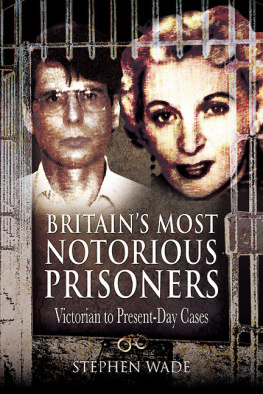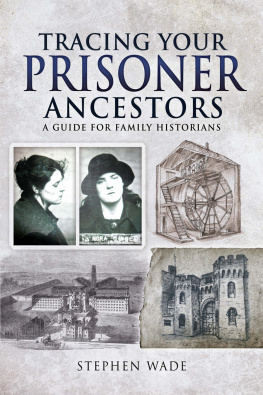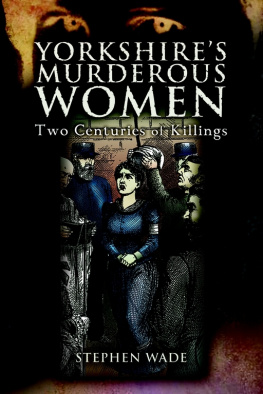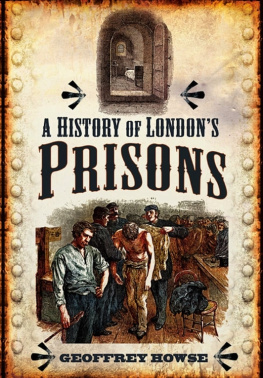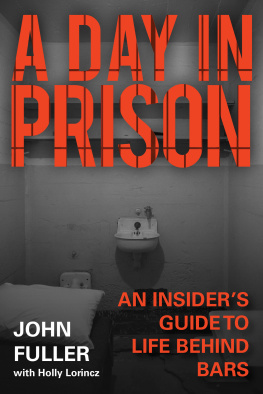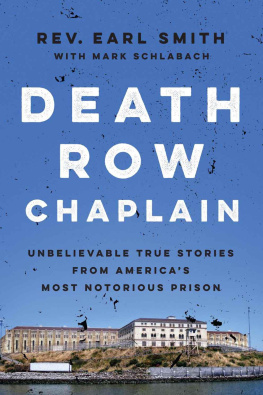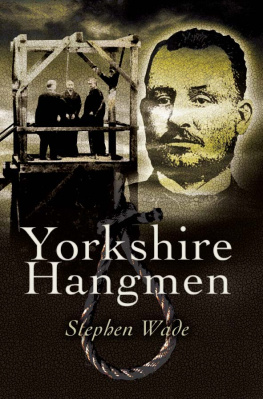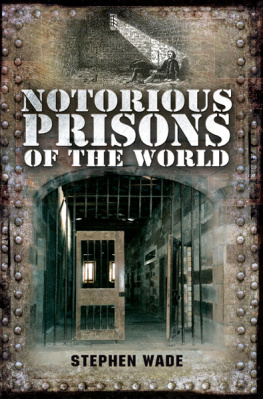Stephen Wade - Britains Most Notorious Prisoners. Victorian to Present-Day Cases
Here you can read online Stephen Wade - Britains Most Notorious Prisoners. Victorian to Present-Day Cases full text of the book (entire story) in english for free. Download pdf and epub, get meaning, cover and reviews about this ebook. year: 2011, publisher: Casemate Publishers and Book Distributors;Wharncliffe, genre: Non-fiction. Description of the work, (preface) as well as reviews are available. Best literature library LitArk.com created for fans of good reading and offers a wide selection of genres:
Romance novel
Science fiction
Adventure
Detective
Science
History
Home and family
Prose
Art
Politics
Computer
Non-fiction
Religion
Business
Children
Humor
Choose a favorite category and find really read worthwhile books. Enjoy immersion in the world of imagination, feel the emotions of the characters or learn something new for yourself, make an fascinating discovery.
- Book:Britains Most Notorious Prisoners. Victorian to Present-Day Cases
- Author:
- Publisher:Casemate Publishers and Book Distributors;Wharncliffe
- Genre:
- Year:2011
- Rating:3 / 5
- Favourites:Add to favourites
- Your mark:
Britains Most Notorious Prisoners. Victorian to Present-Day Cases: summary, description and annotation
We offer to read an annotation, description, summary or preface (depends on what the author of the book "Britains Most Notorious Prisoners. Victorian to Present-Day Cases" wrote himself). If you haven't found the necessary information about the book — write in the comments, we will try to find it.
Prison is an unknown world for most of us. It is a place where time stops and lives are held in suspension, taken out of circulation. Amongst the jail population are the dangerous inmates: killers and rapists, gang hit-men and serial offenders. They are the most notorious, their reputations sometimes enhanced by glamour, horrendous tales of their misdeeds and by their very incarceration. Britains Most Notorious Prisoners tells the stories of some of their lives inside the Big House where prison culture becomes a strange, unreal community and where the prison service has had to learn to cope with those who live by their own morality rather than the law of the land. Here are stories about some of the most famous inmates: Ruth Ellis, the Krays, prison superstar Charles Bronson, the Yorkshire Ripper Peter Sutcliffe, the cannibalistic Dennis Nilsen, the evil child-killer Ian Brady, Beverley Allitt, Razor Smith as well as chilling accounts concerning long forgotten villains....
Stephen Wade: author's other books
Who wrote Britains Most Notorious Prisoners. Victorian to Present-Day Cases? Find out the surname, the name of the author of the book and a list of all author's works by series.

